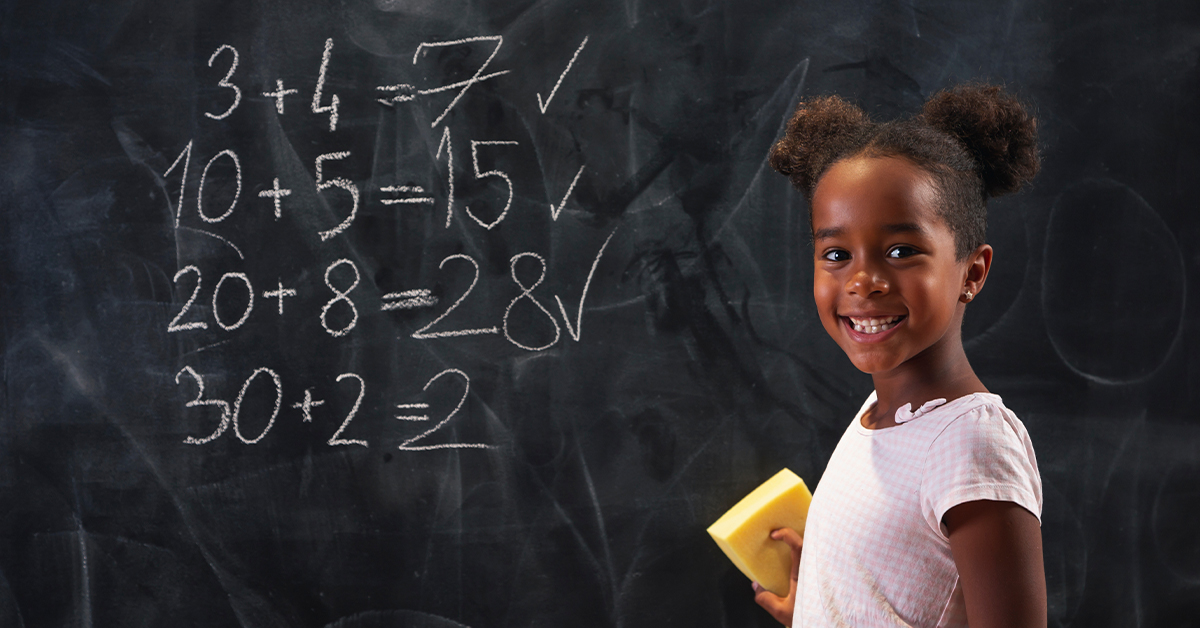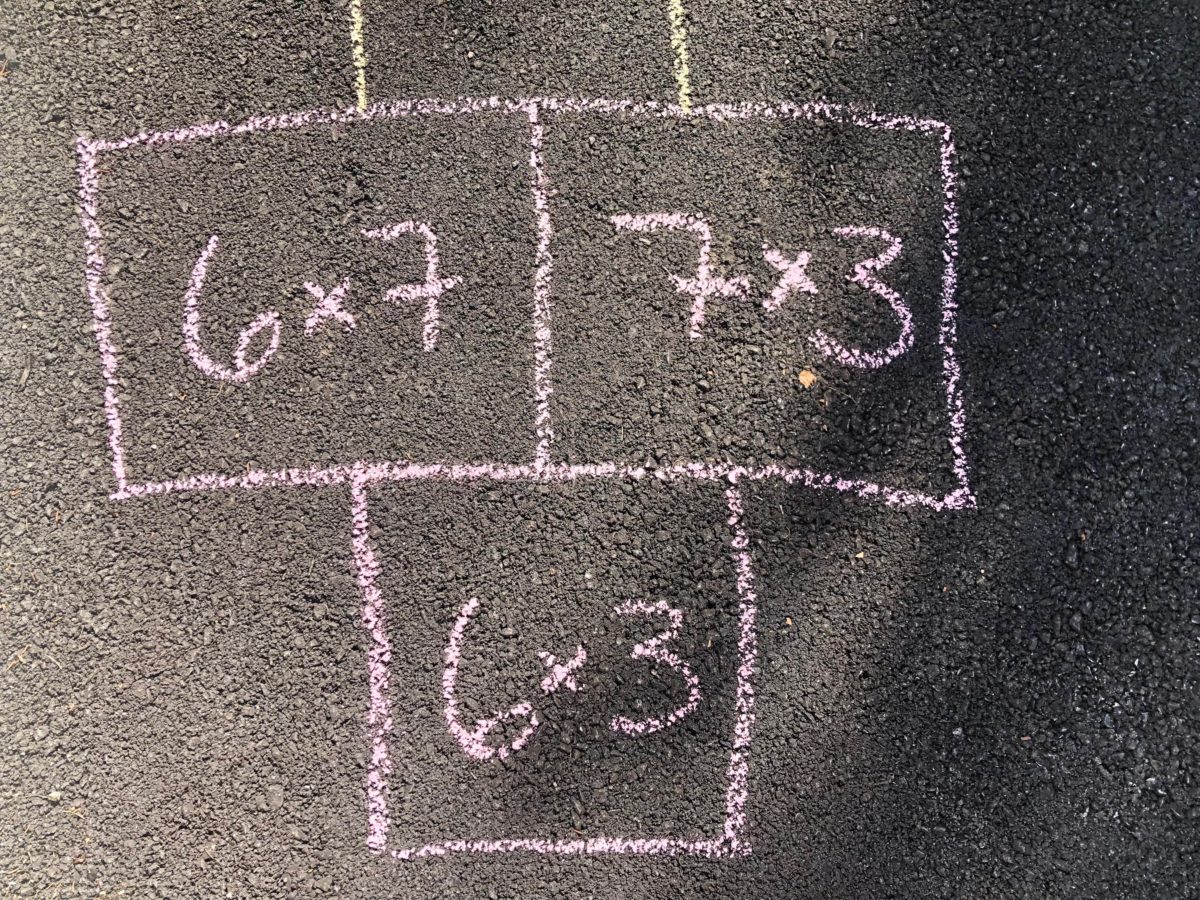
Memorizing basic math facts is an important aspect of early math education, but it can be a hard process for some students. Some common strategies, such as flashcards and timed tests, can cause kids to become frustrated. What about choosing fun activities to make the experience more enjoyable for your child? Below, we’re sharing 11 effective and engaging strategies you can use to help your students learn math facts. But first, let’s take a deeper look at why math fact fluency is so crucial to success.
Why is Math Fact Fluency Important in Mathematics Education?
While it may seem old-school and unnecessary to have students memorize math facts in the age of calculators, fact fluency is still very important for creating a strong foundation for mathematical success with topics like algebra.
Instead of relying on counting strategies to figure out a math fact, your child should be able to recall the fact instantly so they can focus on larger processes. If they expel all of their mental energy figuring out the answer to the math fact, they’ll likely either get lost in the calculations or burned out. This can result in them struggling further as they progress in their math education.
Students who achieve math fact fluency have stored basic math facts in their long-term memory and can recall them with automaticity. This “lessens the mental load” and allows them to use their working memory to gain a deep understanding of higher-order concepts and solve multistep problems.
Oftentimes, issues such as students falling behind in math and experiencing math anxiety stem from them not mastering their math facts.
4 Strategies to Encourage Fluency of Basic Facts
Rather than focusing on rote memorization to have your child learn their math facts, use these strategies to help them understand number relationships and improve their recall long term.
1) Start with Adding Doubles
Learning foundational addition, like doubles, such as 3 + 3 or 8 + 8, can be an effective strategy to ease into addition facts. Since there are just ten doubles to memorize, it’s a manageable goal for a child who struggles with math. Practicing doubles is also a natural lead-in to help your child learn neighboring facts, such as 3 + 4 and 8 + 7 (as the answer is just one more or less than for doubles).
2) Explain Part–Whole Relationships
2) Explain Part–Whole Relationships
Part–part–whole relationships involve seeing numbers as being made up of two or more parts. This strategy works best when used for addition or subtraction facts, as students can see the number relationships when you add two parts together or remove a part from the whole. This is a great way to illustrate how numbers form fact families, which is explained further down below.
Note: when working with subtraction, the whole and one part must be present. Here’s an example of how it works.

3) Teach the Commutative Property
The commutative property states that numbers can be added or multiplied in any order and still get the same answer. Based on this property, if your child knows 4 + 2 = 6, then he can solve 2 + 4 = 6. This approach reduces the number of addition and multiplication facts that they need to master by half, since if they’ve mastered it one way, they have math fact fluency it the other way as well!
4) Show Them How to Skip Count
Skip counting is a simple strategy that your child can use to memorize foundational multiplication facts. Counting by 2s, 5s, 10s, and so on can be fun to do together as your child begins to hear number patterns. You can also use a hundreds chart while skip counting so your student can begin to visualize those patterns.
For instance, when skip counting by 10s, see if your student notices that all the numbers end in zero. This strategy is particularly effective when using a chart that begins with zero and ends in 99. You can print our free chart here.
Please note that this strategy should only be used temporarily until your child achieves true math fact fluency. If your student relies on skip counting to determine the solution for a math fact, then they haven’t yet mastered that fact.

7 Activities to Achieve Math Fact Fluency
Sprinkle some of these activities into your day to support learning, reduce math anxiety, and make working toward math fact fluency a far more enjoyable experience.
1) Fact Family Cards
This activity is most effective when your child understands the relationship between addition and subtraction or multiplication and division. Fact families are simply three numbers that are related and make a set of math facts.
For example: The numbers 9, 3, and 12 make up a fact family.
The addition and subtraction facts they make include:
- 9 + 3 = 12
- 3 + 9 = 12
- 12 – 3 = 9
- 12 – 9 = 3
Another fact family is 3, 4, and 12. They make the following multiplication and division facts:
- 3 x 4 = 12
- 4 x 3 = 12
- 12 ÷ 4 = 3
- 12 ÷ 3 = 4
You can cut out math fact family cards in the shape of a triangle or hexagon to practice and play games.
2) Math Toss
Toss a balloon or ball around the room with your child. As you toss, call out a math fact. The goal is for them to say the answer before catching it. If this is too challenging at first, modify the rule slightly to call out the solution before they pass the balloon after catching it.
3) Jump and Hop Basic Math Facts
This is a great activity for elementary students to develop their math fact fluency. Draw a hopscotch board with sidewalk chalk and write a math fact inside each square. When a child hops on a square, have them read the fact aloud and shout out the answer. You can also recite math facts while doing something rhythmic such as jumping on a trampoline, jumping rope, hopping on one foot, or bouncing a ball.

4) Trading Cards
Invite your students to create math fact trading cards, specifically with themes and colors that they like or involving an interest or hobby. Display the cards or develop your own trading card game that involves practicing the math facts.
5) Apps and Computer Games for Conceptual Understanding
There are plenty of captivating computer games and apps for mobile devices that focus on math fact practice and building math fact fluency. Many of them are free or very low cost. Work them into your weekly routine for short periods of time so your child gets some extra practice.

6) Fact Flash Tag
For this activity, you will need a chalkboard, whiteboard, or a blank wall with sticky notes and a flashlight. List the answers to several basic facts on the board or on the sticky notes (either arranged in rows or randomly). Darken the room and ask your child a math problem. We suggest choosing one operation to focus on at a time, such as multiplication, to limit frustration. The goal is to find the correct answer and shine the flashlight on it as quickly as possible.
7) Fact of the Day
If your student is having difficulty obtaining math fact fluency with just a few facts, choose one of them at a time and make it the “Fact of the Day.” Post the fact in a place where it will be seen often. Then, spontaneously ask your child for the answer throughout the day. You can even award a sticker or other small token each time they give the answer quickly and correctly.
Another way to have fun with the fact of the day is to make it the “password” to do certain things or a substitute for someone’s name.
Need Some Extra Help? Try AIM!
Helping your student develop math fact fluency will build their confidence, reduce math anxiety, and improve their ability to learn more advanced math skills in the future. If your child struggles to recall basic facts accurately and automatically, check out our math intervention program Accelerated Individualized Mastery (AIM). It was specifically designed to help students learn to visualize number relationships so they can commit facts to long-term memory.
This blog was updated on November 4, 2022.




Excellent activities. I must try some of these.
Thank you so much for the activities. I am so excited to have them.